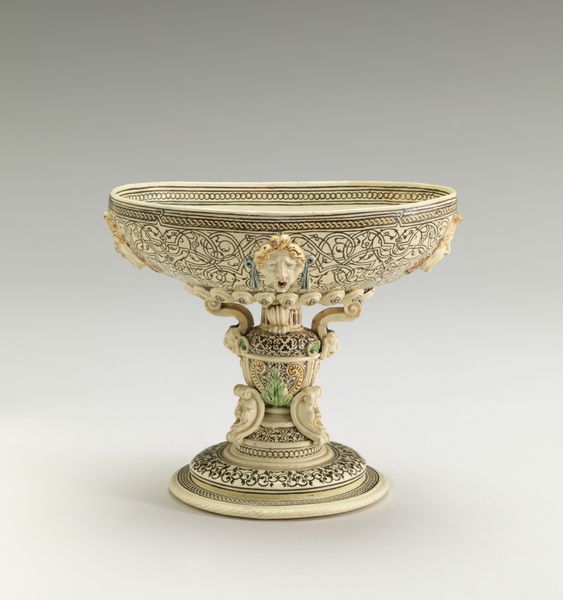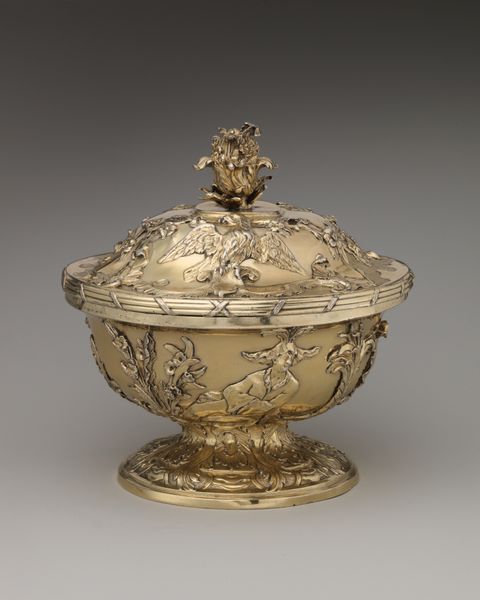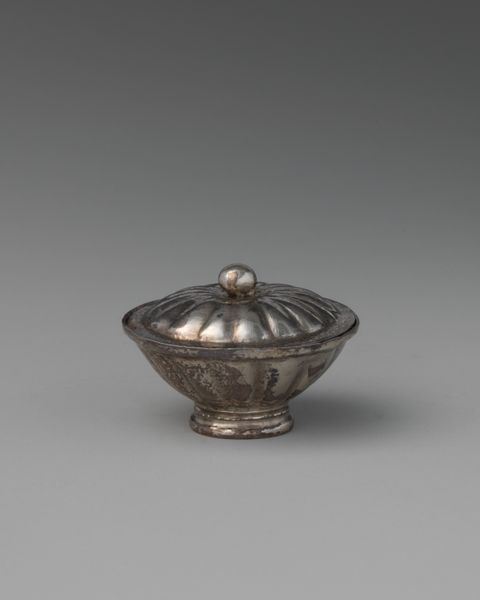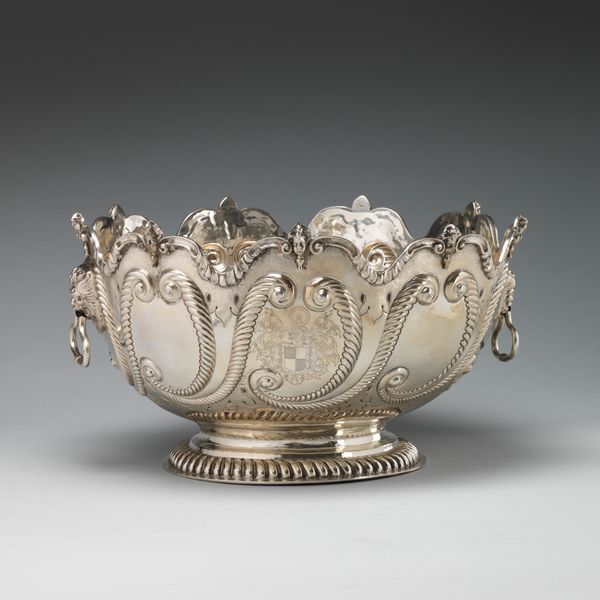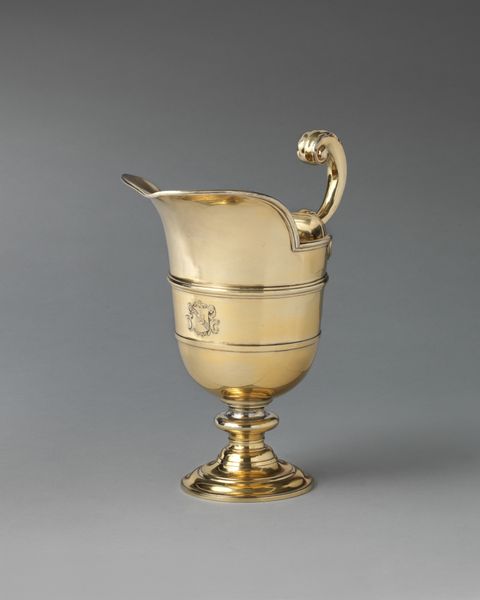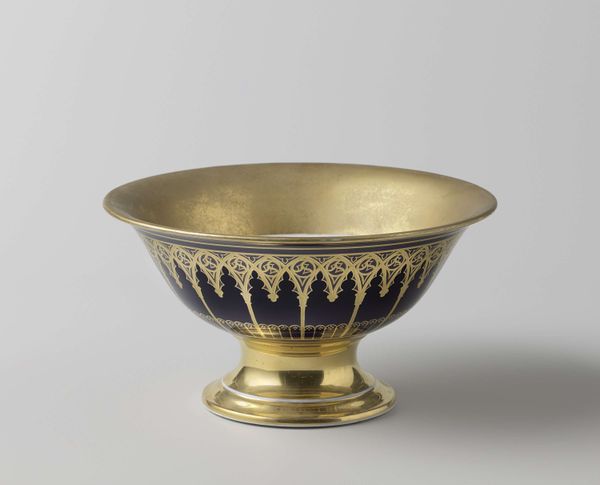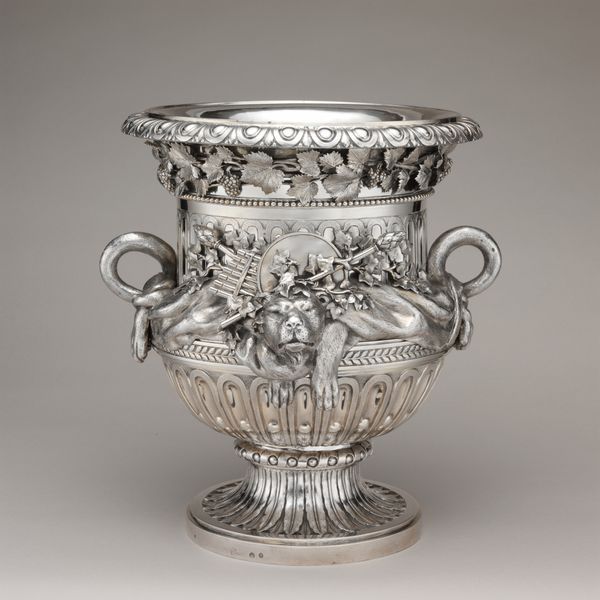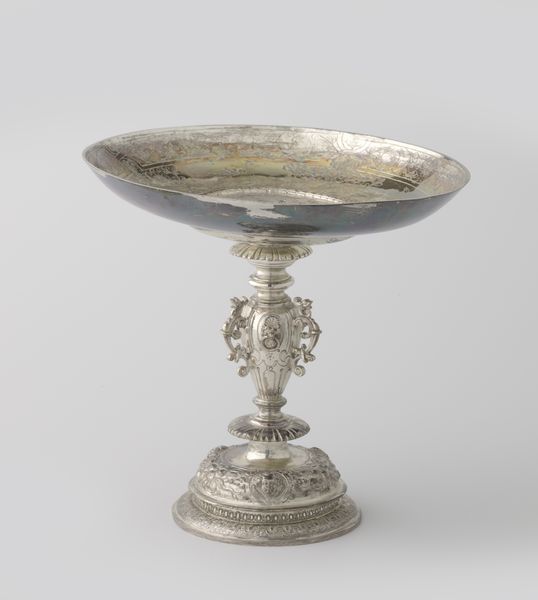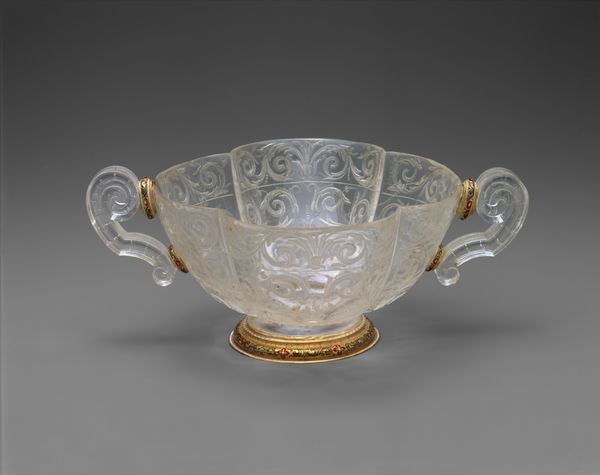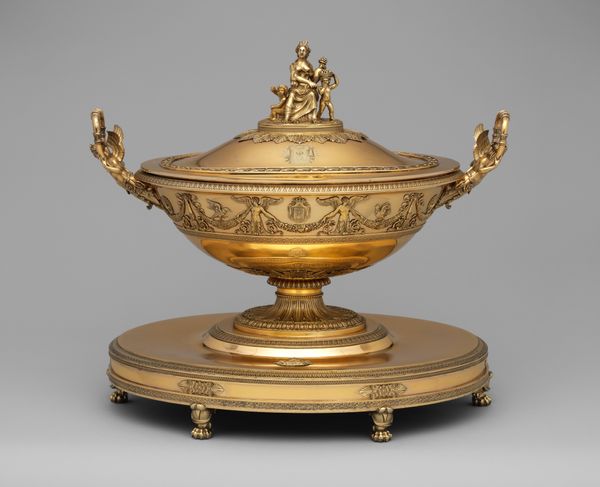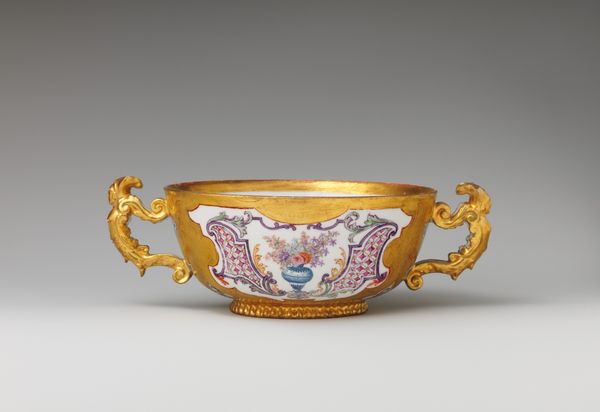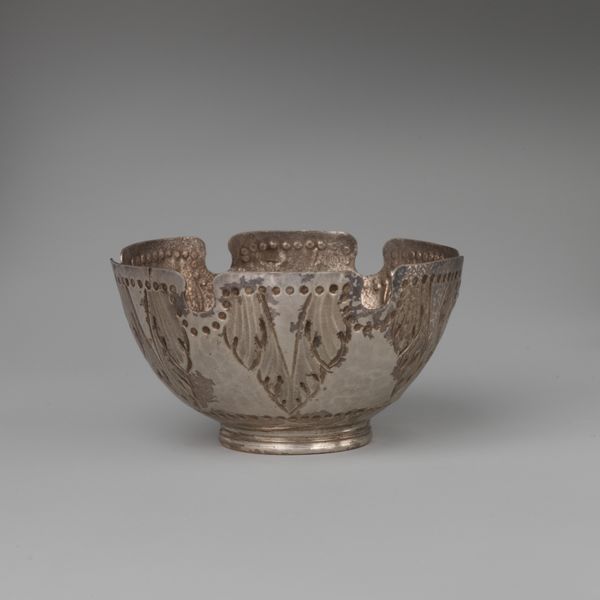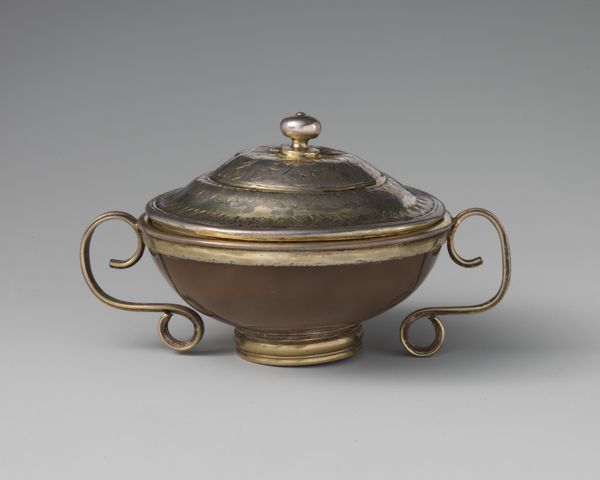
silver, metal, ceramic, sculpture
#
silver
#
metal
#
ceramic
#
sculpture
#
decorative-art
Dimensions: Overall: 3 5/8 × 6 1/16 in. (9.2 × 15.4 cm)
Copyright: Public Domain
This sugar bowl was made by Paul Storr, a prominent silversmith in late 18th and early 19th century England. Silver, of course, is a precious material, and its gleam is a big part of the appeal here. But consider the labor required to transform raw silver into this finished form. It would have been mined, smelted, and refined, before even reaching Storr’s workshop. There, it would be alloyed, likely with copper for strength, then cast, hammered, chased, and engraved, all requiring specialized skills. Note the cast handles with their serpent and mask motifs, and the engraved heraldic crest. The sugar bowl speaks to the rise of a consumer society, as well as the global trade that brought sugar to England, often produced by enslaved people. Silverware like this wasn't just functional; it was a symbol of wealth and status, reflecting Britain's economic and imperial power at the time. So, next time you reach for the sugar, remember the complex history embedded in even the simplest of objects.
Comments
No comments
Be the first to comment and join the conversation on the ultimate creative platform.
